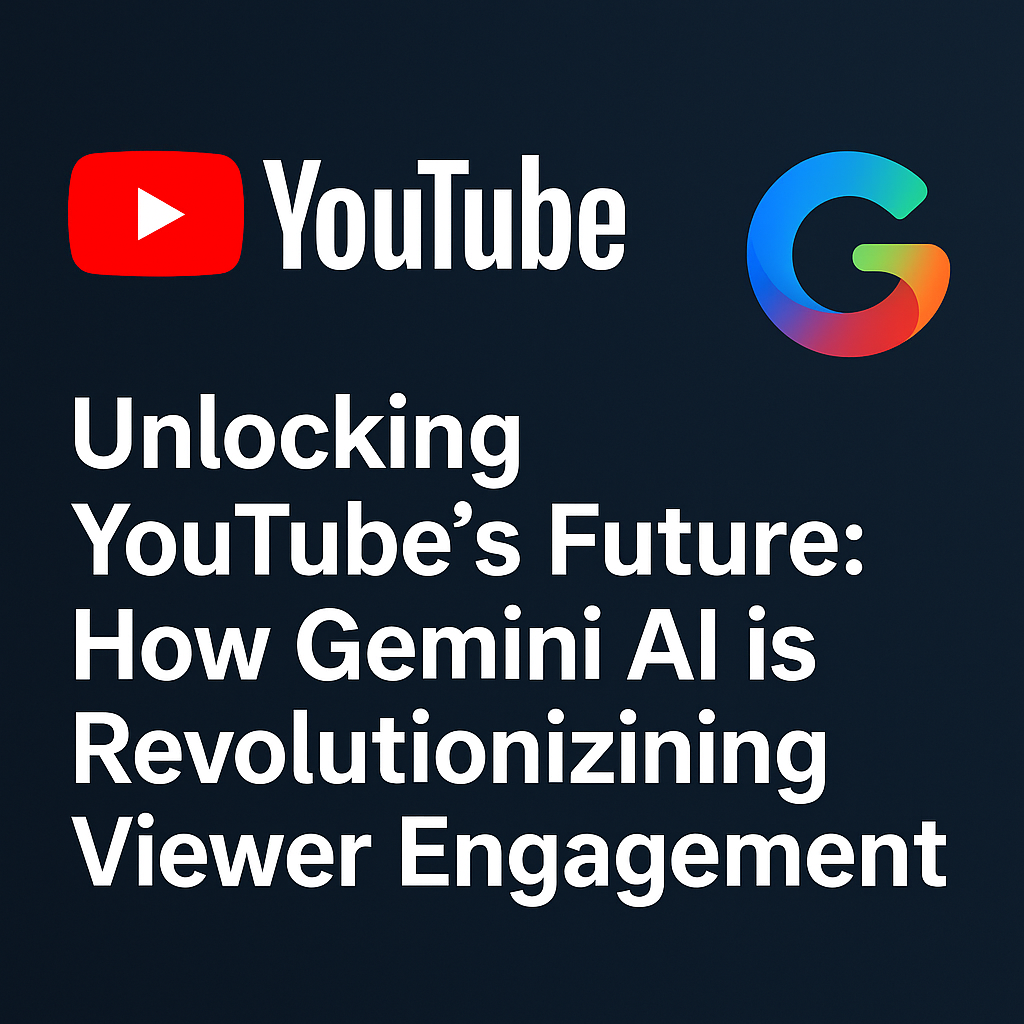Maximize Viewer Impact: Exploring YouTube’s New Gemini AI Features

Youtube has introduced a revolutionary form of advertising, using Google’s Gemini AI to target and place ads.
Gemini-Powered ‘Peak Points’ Unveiled!
Peak at YouTube Brandcast YouTube unveiled ‘Peak Points’ at YouTube Brandcast in New York, an AI tool that optimizes advertising strategies. This functionality leverages Google’s Gemini AI to analyze video content closely and identify moments when viewers are most engaged. Ads inserted after such engagement-focused moments can improve ad reach and effectiveness by encouraging viewers to stick around through commercial break and offset ad-skipping behavior.
How ‘Peak Points’ Operates
Gemini AI processes videos holistically and analyzes the content on a frame and transcript level to automatically composite together segments of a video with high levels of viewer attention. For example, in a demonstration, Gemini found a key moment just before a marriage proposal and suggested that would be an optimal moment for an advertisement to appear. This strategic placement allows ads to be served at a time when viewers are most engaged, possibly resulting in a higher number of ad impressions and clicks.
What It Means for Advertisers and Creators
For Advertisers:
- Increased Engagement: By serving ads during peak engagement periods, marketers can look forward to better chances of viewers’ attention and more revenue.
- Relevant ad spend: Focusing on high-engagement segments saves advertising dollars by budgeting more effectively, and producing a higher ROI.
For Creators:
- Revenue Boost: If ad placement strategies are implemented effectively, ad revenues may increase, which in turn helps content creators earn money.
- Issues of Content Integrity: Nevertheless, ads added during peak scenes may ruin audience experience and satisfaction.
Integration with YouTube AI Stack
Peak Points is one part of YouTube’s larger goal of integrating AI into its platform. YouTube is also experimenting with a feature called ‘AI Overviews’, which offers a curated selection of video clips right at the top of the search results, in a bid to make it easier for people to discover content.
Technical Details of Gemini AI
Gemini AI β Google What we did Google’s Gemini AI is a leap forward for AI, a set of multimodal models that can consume, process, and learn from different data types. Read on for a deep-dive on its technical specs, architecture, and features.
Architecture Description of Gemini AI
Transformer-Based Foundation
Gemini models are based on a decoder-only transformer architecture suitable for efficient training and inference on TPUs. This architecture allows the models to effectively handle long context lengths and complex tasks.
Multimodal processing abilities
One of the highlights of Gemini is the built-in multimodal support. The models are agnostic to diverse data types, potential examples include, but not limited to:
- Text : Natural language understanding and generation Commun.
- Images: Analysis and interpretation of visual material.
- Sound: Voice recognition and processing.
- Video: Temporal and spatial video content understanding
- Code: Understanding and generation of programming language.
This multimodal system enables Gemini to accomplish tasks that entail comprehension and synthesis of information from multiple modalities.
Expert modules and gating mechanism
In their architecture, Gemini has specialized expert modules:
Text Expert – Dealing with and interpreting the textual information.
- Picture Expert: Examines visual content.
- Fusion Expert: Combines text and image experts.
A gating mechanism adaptively determines the weights of each experts’ output according to the input, yielding the maximum performance for many tasks.
Model versions & Specifications
There are several sizes and models of Gemini products, each designed for different applications:
Gemini 1.0 Series
- Gemini Ultra: For those who need to perform massively computation-sensitive work.
- Gemini Pro: A good mix of high performance and low power for a wide class of applications.
- Gemini Nano: For on-device tasks for fresh AI on smartphones and other edge devices.
Gemini 1.5 Series
- Gemini 1.5 Pro: Has a sparse mixture-of-experts model with a context window of as many as 1 million tokens, enabling it to handle very large pieces of data, among them long documents and long audio or video clips.
Gemini 1.5 Flash A stripped down version of 1.5 Pro which aims to the codebase aiming to improve the inference time while keeping the high level of context/uncannyvalley support alike its predecessor Made with API and Interface options are likely going to be made available as soon as the project matures.
Gemini 2.5 Series
Gemini 2.5 Pro The latest and most advanced version which can cope with complex reasoning and task Mental modeling.
- Gemini 2.5 Flash: Speed and utility: Ideal for where speed counts like apps and combined with any other master lighting.
Advanced Capabilities
4) Context Understanding in Context of the Extended Context 4a) Context as Context Understanding of the Extended Context.
The Gemini 1.5 Pro and future versions can process context windows up to 1 million tokens, which allows a processing of very large inputs, for example.
- 1 hour of video content.
- 11 hours of audio recordings.
Keep it simple or making a large Codebase of > 30.000 lines.
Docments of 700,000 words or more Receive From HeavenELCOME OF WELCOME From Heaven to earth the spirit.
Reasoning and Planning
Gemini 2.5 households are capable of reasoning, so they can plan and execute a complex behavior, simulating it in their mind first before giving the answer.
Multimodal Interaction in Real Time
Let’s see a few possibilities of what Gemini can provide along with the Multimodal Live API: Applications previously unavailable: Gemini is able to read real-time audio and video inputs, and hence dynamically interact and run applications like live translations or interactive simulations.
Safety and Ethical Concerns
Google Promotes Responsible AI with Gemini The search giant further stresses responsible AI development with Gemini, it introduced effort ensure safety:
- Content moderation: Applying filters to block harmful or inappropriate content.
- Mitigation for Biases: Continual works to understand and lessen the biases in the model outputs.
- Transparency: Offering unambiguous instructions and usage information in the documentation to educate users about the features and limitations of the model.
Integration and Accessibility
Models developed in Gemini are incorporated in multiple Google products and services, such as:
- Android Devices: Powering features such as smart replies and on-device help.
- Google Workspace: AI-powered suggestions and automation that enrich productivity tools.
- Developer Platforms: Available through Google AI Studio and Vertex AI, giving developers the freedom to create and deploy apps using Gemini.
In conclusion, Google’s Gemini AI is a substantial step forward in the realm of artificial intelligence, providing versatile multimodal abilities across many different use cases. With its advanced architecture, wide contexts processing, and ability to integrate different pipelines, it’s a tool of choice for developers, and companies, that want to unlock the potential of AI.
Future Outlook
Now in pilot phase, Peak Points will be rolled out region by region over the course of the upcoming year. As YouTube further develops this feature, the feedback from both advertisers and audience will be fundamental in informing the product experience, and we are actively working with interested partners to learn more about how this can complement their campaigns.
So in summary, the ad-powered Peak Points feature from YouTube, powered by Gemini, represents a major leap forward in AI advertising. Intelligently recognizing and leveraging high-engagement moments in videos, this tool represents an appealing means for advertisers to better reach and engage audiences, as well as new opportunities and concerns for content producers.



